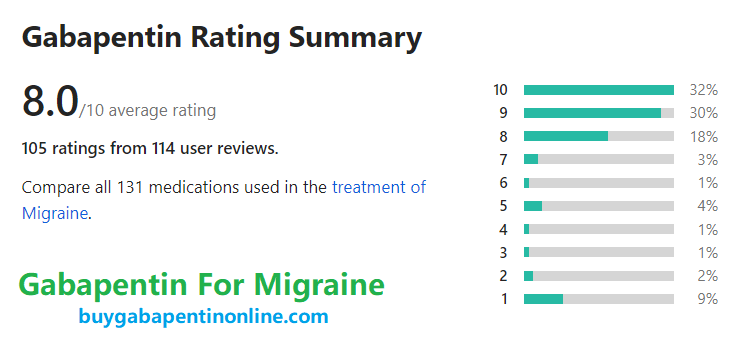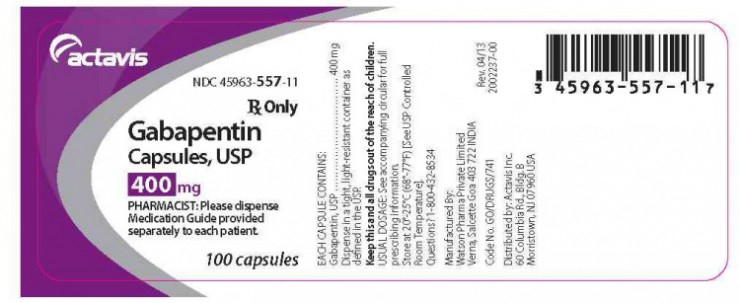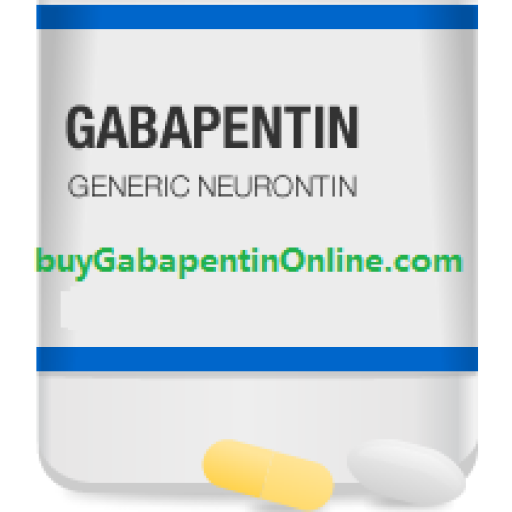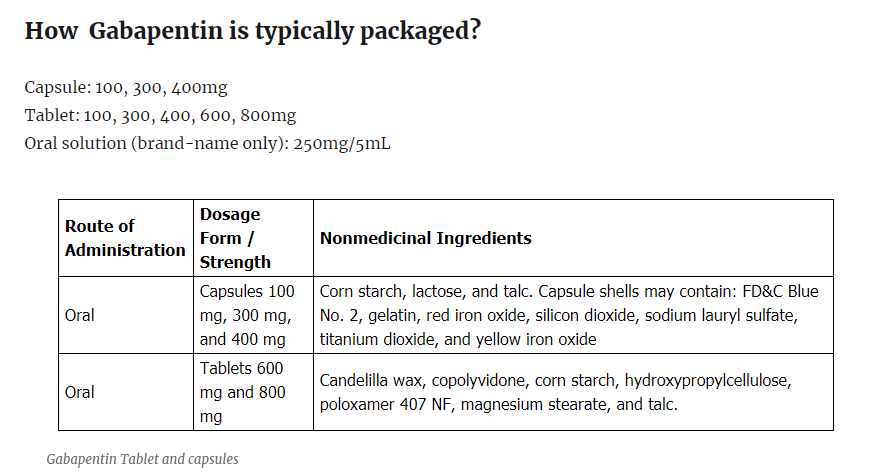In the quest to find effective preventive migraine treatments, healthcare providers sometimes prescribe medications “off-label.” In these cases, a drug has been approved by the U.S. Food and Drug Administration (FDA) for one disorder, but has been found to have positive effects on an unrelated one.
Gabapentin is one such drug. It’s an anti-seizure drug sometimes used to prevent migraines, though there is conflicting scientific evidence supporting its effectiveness in this regard.
In the United States, gabapentin is sold in generic form and under the brand names Neurontin, Gralise, Horizant, and Neuraptine.
Gabapentin has an average rating of 8.0 out of 10 from a total of 105 ratings for the treatment of Migraine. 80% of reviewers reported a positive effect, while 11% reported a negative effect.

As a migraine sufferer since I was 13 yrs old. I am now 56 yrs old. I tried it all. Imitrex, Fiorinol, Maxalt, Fioricet, Relpax, Zomig, Treximet, Cafergot, you name it. Sometimes I ended up in the E.R for a shot of Toradol. Finally I saw a general practitioner. He put me on gabapentin, 400 mg 3x a day. What a miracle. I’ve been on it for over a year now and been TOTALLY headache free. Wish all my other doctors were up with this. Would have saved me a lot of suffering.
Gabapentin is available in a generic version but also comes under the brand names of Horizant, Neurontin, and Gralise. It’s available orally as a liquid solution, capsule, or tablet for extended or immediate release. It can be taken with or without food.

How It Works
Gabapentin is actually an anticonvulsant drug. It’s usually used as a seizure preventative for patients with epilepsy, or to alleviate the nerve pain of shingles. Anticonvulsants are a class of drugs designed to soothe nerve impulses. However, gabapentin is sometimes used for migraine prophylaxis (or prevention).
The precise mechanism of gabapentin’s action is not well known. Even though this drug has a similar structure to a brain neurotransmitter called GABA (gamma-aminobutyric acid), it has no effect on its receptors. It is believed that gabapentin blocks calcium channels, modulating the release of excitatory neurotransmitters.
Gabapentin and Migraine Prevention
Being an anticonvulsant, the theory behind using gabapentin for migraines is that its ability to calm nerve impulses could help avert migraine pain. Gabapentin could ease the brain’s electrical activities by settling excitatory neurotransmitters and blocking calcium channels.
However, this is mostly theoretical. Gabapentin’s exact role in migraine prevention isn’t well understood by researchers, and more research is needed to figure out what makes it work.
Gabapentin isn’t usually prescribed as a primary migraine preventative. It’s typically added to work in conjunction with other therapies, or used when other medications haven’t worked for the patient. As a preventative measure rather than an acute treatment, gabapentin needs to be taken continuously.
Gabapentin for Migraines Is an “Off-Label” Use
When a drug is used for something other than its purpose approved by the FDA, it’s called an off-label use. Since the FDA regulates the approval and testing of drugs (and not how doctors choose to prescribe them), your doctor is allowed to prescribe gabapentin for migraines if it seems like the right solution.
Gabapentin is primarily used to treat epilepsy in people older than 12 and partial seizures in children ages 3 to 12. It is also FDA-approved to treat a condition called postherpetic neuralgia—the nerve-related pain complication of a herpes zoster attack (shingles) that can occur in adults.3
Besides these uses, gabapentin is used off-label for a variety of other conditions like migraine prevention, as well as diabetic neuropathy, restless legs syndrome, and fibromyalgia.
Because of its benefit in treating these and other issues, gabapentin is what’s known as an adjuvant analgesic—a drug that can help control pain, despite it not being primarily intended to do so. Gabapentin may be used alone or with other medications when necessary.
It’s important to note, however, that The American Academy of Neurology (AAN) and the American Headache Society (AHS) do not list gabapentin as “effective” or “probably effective” for preventing migraines in their 2012 guidelines. Instead, gabapentin is given a level U rating, which means the evidence is conflicting or inadequate to support or refute its use for migraine prevention.
Gabapentin for Migraine Dosages
While gabapentin is prescribed under the care of a doctor, be careful to take only the recommended amount, and talk to your doctor about how to wean off of it if that becomes necessary.
What the Research Says
The research behind gabapentin for migraines is a bit mixed, but does show some promise.
The American Academy of Neurology (AAN) released a statement in 2013 which said there was insufficient evidence supporting gabapentin for migraine prophylaxis.
In 2014, a study conducted on gabapentin for episodic migraine found that some other antiepileptic drugs could be considered first-line migraine preventatives, but found inadequate evidence to recommend gabapentin for migraine prevention, saying it’s “not effective and commonly causes adverse effects.”
A 2016 study of gabapentin for headache disorders did reveal some benefit. However, it stopped short of recommending it as a primary migraine therapy.
How should I take gabapentin?
Take gabapentin exactly as prescribed by your doctor. Follow all directions on your prescription label. Do not take in larger or smaller amounts or for longer than recommended.
If your doctor changes your brand, strength, or type of gabapentin, your dosage needs may change. Ask your pharmacist if you have any questions about the new kind of gabapentin you receive at the pharmacy.
Both Gralise and Horizant should be taken with food.
Neurontin can be taken with or without food.
If you break a Neurontin tablet and take only half of it, take the other half at your next dose. Any tablet that has been broken should be used as soon as possible or within a few days.
Swallow the capsule or tablet whole and do not crush, chew, break, or open it.
Measure liquid medicine carefully. Use the dosing syringe provided, or use a medicine dose-measuring device (not a kitchen spoon).
Do not stop taking this medicine suddenly, even if you feel fine. Stopping suddenly may cause increased seizures. Follow your doctor’s instructions about tapering your dose.
In case of emergency, wear or carry medical identification to let others know you have seizures.
This medicine can cause unusual results with certain medical tests. Tell any doctor who treats you that you are using gabapentin.
Store both the tablets and capsules at room temperature away from light and moisture.
Store the liquid medicine in the refrigerator. Do not freeze.
Dosing information
Usual Adult Dose for Epilepsy:
Initial dose: 300 mg orally on day one, 300 mg orally 2 times day on day two, then 300 mg orally 3 times a day on day three
Maintenance dose: 300 to 600 mg orally 3 times a day
Maximum dose: 3600 mg orally daily (in 3 divided doses)
-Maximum time between doses in the 3 times a day schedule should not exceed 12 hours
-The safety and effectiveness of gabapentin available under the trade name Gralise or Horizant in patients with epilepsy has not been studied.
Use: Adjunctive therapy in the treatment of partial onset seizures, with and without secondary generalization
Usual Adult Dose for Postherpetic Neuralgia:
-Initial dose: 300 mg orally on day one, 300 mg orally 2 times day on day two, then 300 mg orally 3 times a day on day three
-Titrate up as needed for pain relief
-Maximum dose: 1800 mg per day (600 mg orally 3 times a day)
Gabapentin available under the trade name Gralise:
-Maintenance dose: Gralise should be titrated to 1800 mg orally once daily with the evening meal.
-Recommended titration schedule:
Day 1: 300 mg orally with the evening meal
Day 2: 600 mg orally with the evening meal
Days 3 through 6: 900 mg orally with the evening meal
Days 7 through 10: 1200 mg orally with the evening meal
Days 11 through 14: 1500 mg orally with the evening meal
Day 15: 1800 mg orally with the evening meal
COMMENT:
-Gralise is not interchangeable with other gabapentin products because of differing pharmacokinetic profiles that affect the frequency of administration.
Gabapentin enacarbil extended release tablets are available under the trade name Horizant:
-The recommended dosage is 600 mg orally 2 times a day. Therapy should be initiated at a dose of 600 mg orally in the morning for 3 days of therapy, then increased to 600 mg 2 times a day (1200 mg/day) on day four.
COMMENT:
Gabapentin enacarbil extended release tablets available under the trade name Horizant and gabapentin are not interchangeable.
Use: Postherpetic neuralgia
Usual Adult Dose for Restless Legs Syndrome:
Gabapentin enacarbil available under the trade name Horizant:
600 mg orally once daily with food at about 5 PM
Use: For the treatment of moderate-to-severe primary Restless Legs Syndrome (RLS) in adults
Usual Pediatric Dose for Epilepsy:
Less than 3 years: Not recommended
Greater than or equal to 3 and less than 12 years:
Starting Dose: Ranges from 10 to 15 mg/kg/day in 3 divided doses
Effective Dose: Reached by upward titration over a period of approximately 3 days; the effective dose in patients 5 years of age and older is 25 to 35 mg/kg/day in divided doses (3 times a day). The effective dose in pediatric patients ages 3 and 4 years is 40 mg/kg/day and given in divided doses (3 times a day). Gabapentin may be administered as the oral solution, capsule, or tablet, or using combinations of these formulations. Dosages up to 50 mg/kg/day have been well tolerated in a long term clinical study. The maximum time interval between doses should not exceed 12 hours.
Greater than 12 years:
-Initial dose: 300 mg orally on day one, 300 mg orally 2 times a day on day two, then 300 mg orally 3 times a day on day three
-Maintenance dose: 900 to 1800 mg orally in 3 divided doses; the dose may be increased up to 1800 mg/day. Dosages up to 2400 mg/day have been well tolerated in long term clinical studies. Doses of 3600 mg/day have also been administered to a small number of patients for a relatively short duration, and have been well tolerated. The maximum time between doses in the three times a day schedule should not exceed 12 hours.
Use: Adjunctive therapy in the treatment of partial onset seizures, with and without secondary generalization in patients 3 years of age and older
Side Effects of Gabapentin
LIke many other FDA-approved drugs, gabapentin could have side effects for many patients. Those include:
-
- Swelling of feet or limbs
- Unexpected or atypical eye movements
- Loss of coordination
- Blurry vision or other vision changes
Better Options for Migraine Prevention
There are plenty of migraine preventative drugs on the market which you can discuss with your doctor.
And as you probably know, living a healthy lifestyle could also help you reduce the migraine attacks you have to endure. Getting plenty of sleep, a healthy diet, and physical activity are all important.
Many migraine relief tools could reduce your suffering when you’re hit with a migraine, or help ward off more of them. These include supplemental Vitamin B2 and magnesium, which could help reduce migraine frequency. Axon Optics glasses, which have been shown to help 85% of users, are at the top of our list.
Interactions
Drinking alcohol may make some side effects of gabapentin more severe.
Types of drugs that are known to interact with gabapentin and may cause problems include:
-
- Opiate pain medications, including Vicodin (hydrocodone) and morphine, among others
- Naproxen (Aleve, Naprosyn, and others)
- Medications used for heartburn, including Mylanta, Maalox, and cimetidine
If you do dipstick tests to check your urine for protein, tell your healthcare provider. Gabapentin may affect the results.
Your healthcare provider can advise you on whether you should avoid taking certain drugs with gabapentin entirely, or if the timing or dosage simply need to be adjusted.

Contraindications
Currently, there is not enough research or well-controlled studies on humans to deem this medication safe for expecting mothers.3 Contact your healthcare provider to discuss whether the benefits of use may outweigh the risks in your case.
Gababentin should be avoided by people with chronic kidney disease or myasthenia gravis.
Does gabapentin help nerve pain?
Gabapentin is approved to treat the type of nerve pain (neuralgia) that results from nerve damage. Gabapentin is used to treat neuralgia caused by a herpes zoster viral infection, also known as shingles. This pain is called post-herpetic neuralgia (PHN), and it can be severe and chronic. Gabapentin is also used to treat pain from diabetic neuropathy, which happens when nerves in the feet damaged by diabetes cause chronic burning pain.
The exact way that gabapentin works to relieve pain is not known. It may change the way the body senses and reacts to pain. Gabapentin is used to manage long-term (chronic) pain, not to be taken for pain as needed. Chronic pain can interfere with sleep and work, and lead to depression.
Studies show that pain relief may start within one week and reach a maximum effect in about 4 weeks. It can take this long because gabapentin is usually started at a low dose and gradually increased over time until it works.
For treating neuralgia, gabapentin is often started at 300 mg per day and gradually raised by 300 mg per day. One 2017 review of 37 studies found that pain relief usually occurs at a dose of 1,200 mg or more.
The same review compared gabapentin to an inactive medicine (placebo) in almost 6,000 adults with chronic pain from PHN or diabetic neuropathy. Study participants were given either gabapentin or a placebo for 4 to at least 12 weeks. The results showed that 30-40% of people taking gabapentin were able to reduce their pain by half or more, compared to 10-20% of people taking the placebo.
Although some people may get significant relief, others may have side effects without relief of pain. More than half of people taking gabapentin did not get significant relief and had side effects from the drug.
According to the review, about 60% of people taking gabapentin had side effects, including:
-
- Dizziness
- Sleepiness
- Water retention (edema)
- Clumsiness while walking (ataxia)
It does not typically make pain worse: In trials comparing gabapentin side effects to placebo side effects, only 1% of people reported increased pain, and this was the same for gabapentin and placebo.
Once you find the dose that relieves neuralgia for you, it is important not to stop taking it suddenly. Stopping suddenly can lead to withdrawal symptoms such as:
-
- Anxiety
- Insomnia
- Nausea
- Pain
- Sweating

